We are thrilled to announce the winners of Architizer's inaugural Vision Awards, the world’s biggest awards program dedicated to the art of architectural representation. Sign up to receive future program updates >
The Manifesto of Surrealism was released in 1924, launching a dynamic global phenomenon. Since then, surrealists past and present have sought to access, unlock, assess and extract visuals from their subconscious to inspire them and inform their works. Surrealist art is often devoid of the binding of logic that exists in reality, depicting strange and unusual landscapes, distorted forms and chaotic messaging in poetic and even humorous works. It is a movement where the creativity of a piece is only hindered by the artist’s imagination.
“SURREALISM, n. Psychic automatism in its pure state, by which one proposes to express — verbally, by means of the written word, or in any other manner — the actual functioning of thought. Dictated by the thought, in the absence of any control exercised by reason, exempt from any aesthetic or moral concern.”
– André Breton, The Manifesto of Surrealism (1924)
Unlike many art movements, which are often contingent to a particular period or place, Surrealism is far-reaching and remains en vogue in the present. Much like the influence of many art movements upon the built work, architecture has its fair share of practicing surrealists. Historically, surrealism has been bound to architecture, creating mind-bending worlds with depictions of outrageous architectural feats.
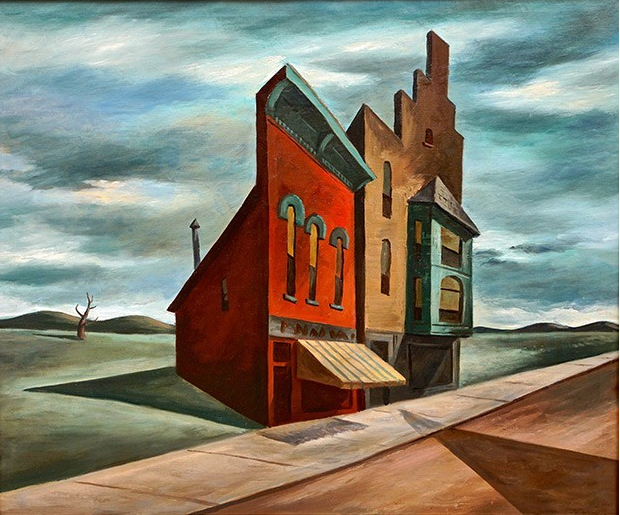
Harold Noecker. Angular Landscape, c. 1944. Oil on canvas; 30 x 36 in.
These imaginary worlds took little time to influence reality; soon after the movement’s birth, architects and designers sought to flip the script and replicate the dreamscapes in reality. While distortion and chaos are not typically words of accomplishment used to describe architectural accolades, there is often an enchanting and mystical quality to successful surrealist architecture that has garnered massive popularity in recent years.
Spanning across decades, the following 8 projects push the bounds of conventional architectural imagery, verging towards the realm of the dream world.

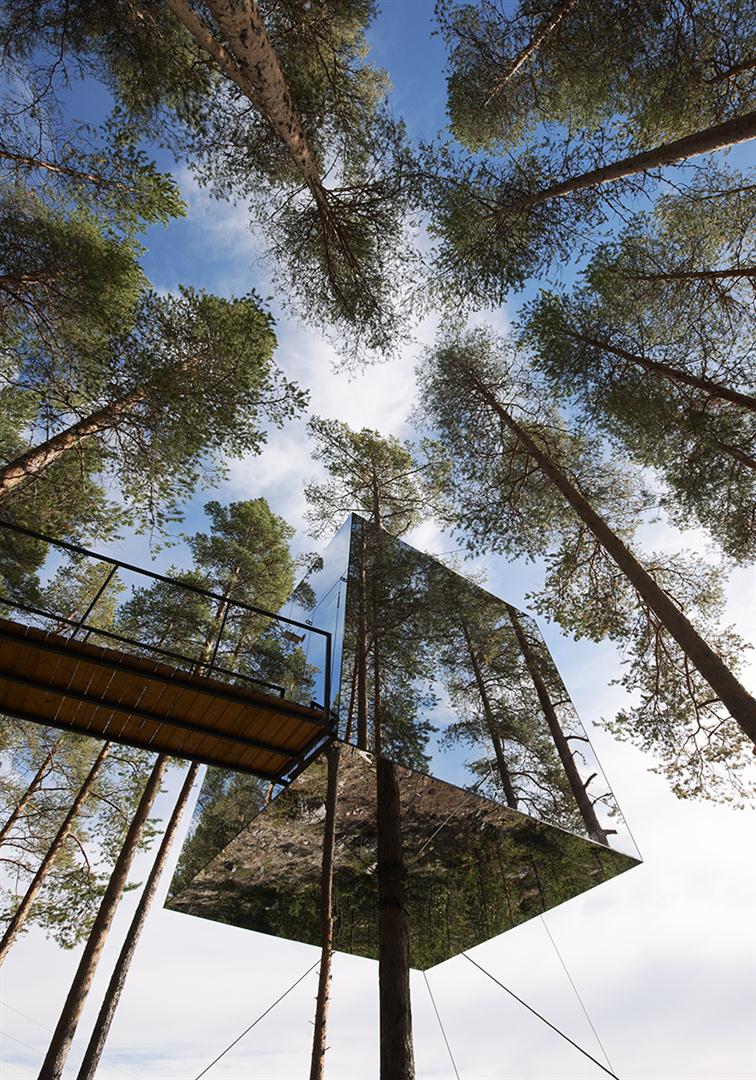
Tree Hotel by Tham & Videgård Arkitekter, Harads, Sweden
A dream-like structure that is suspended high amongst the treetops, Tree Hotel is almost otherworldly, recalling the teetering figures of Salvator Dalí. The building’s highly polished surface reflects its natural surroundings and suggests movement as the weather affects the surrounding trees. It could be molten metal floating through the forest.

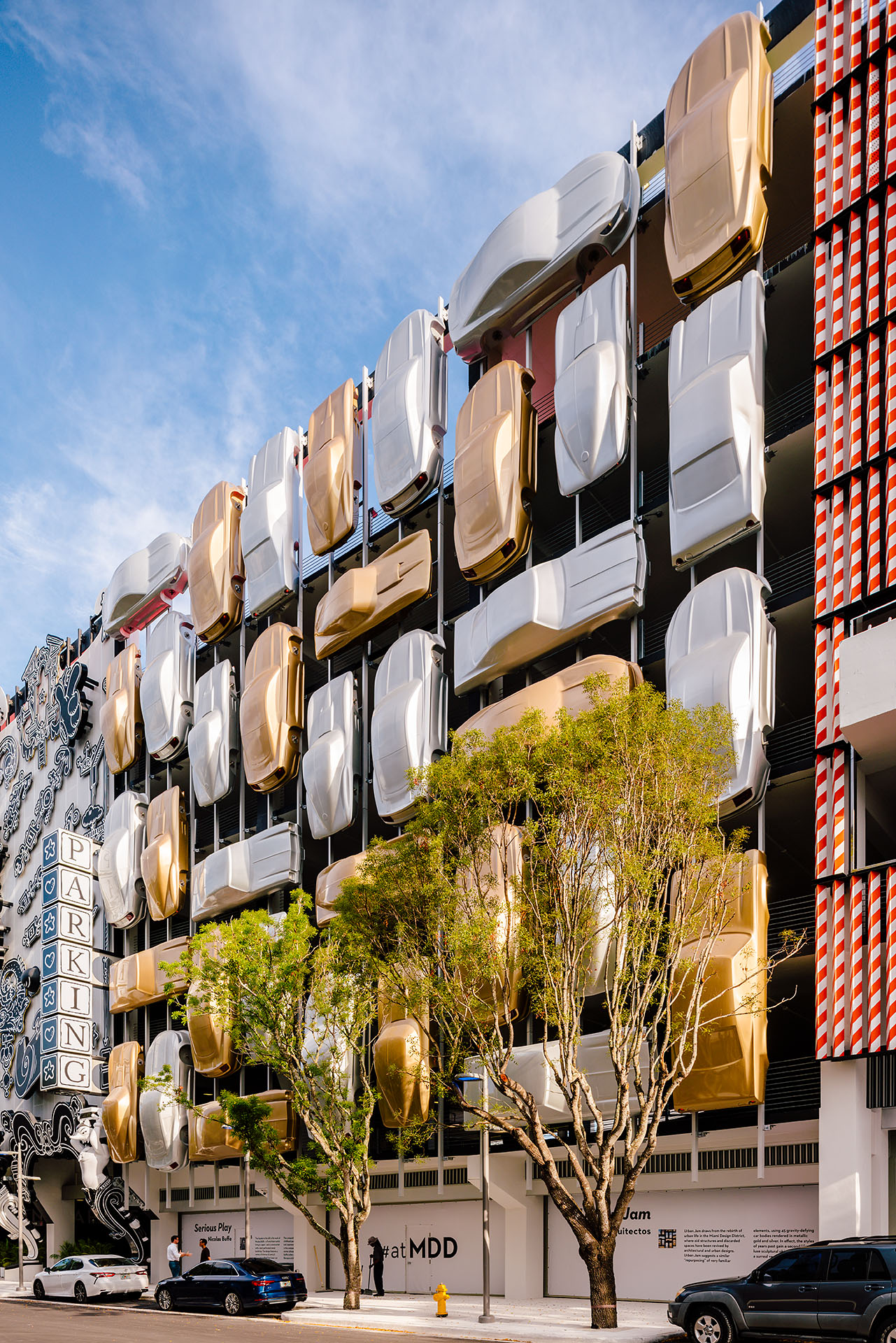
Miami Museum Garage by K/R, Clavel Arquitectos, J.MAYER.H, Nicolas Buffe, WORKac, Miami, FL, United States
Miami Museum Garage was the brainchild of Terence Riley. He was inspired by the surrealist parlor game, Exquisite Corpse, and selected a handful of individual practices to design the building. As in the game, the selected architects created images (in this case, façades) without knowing what others had created. The result is a composite image of unique individual parts that create the whole.
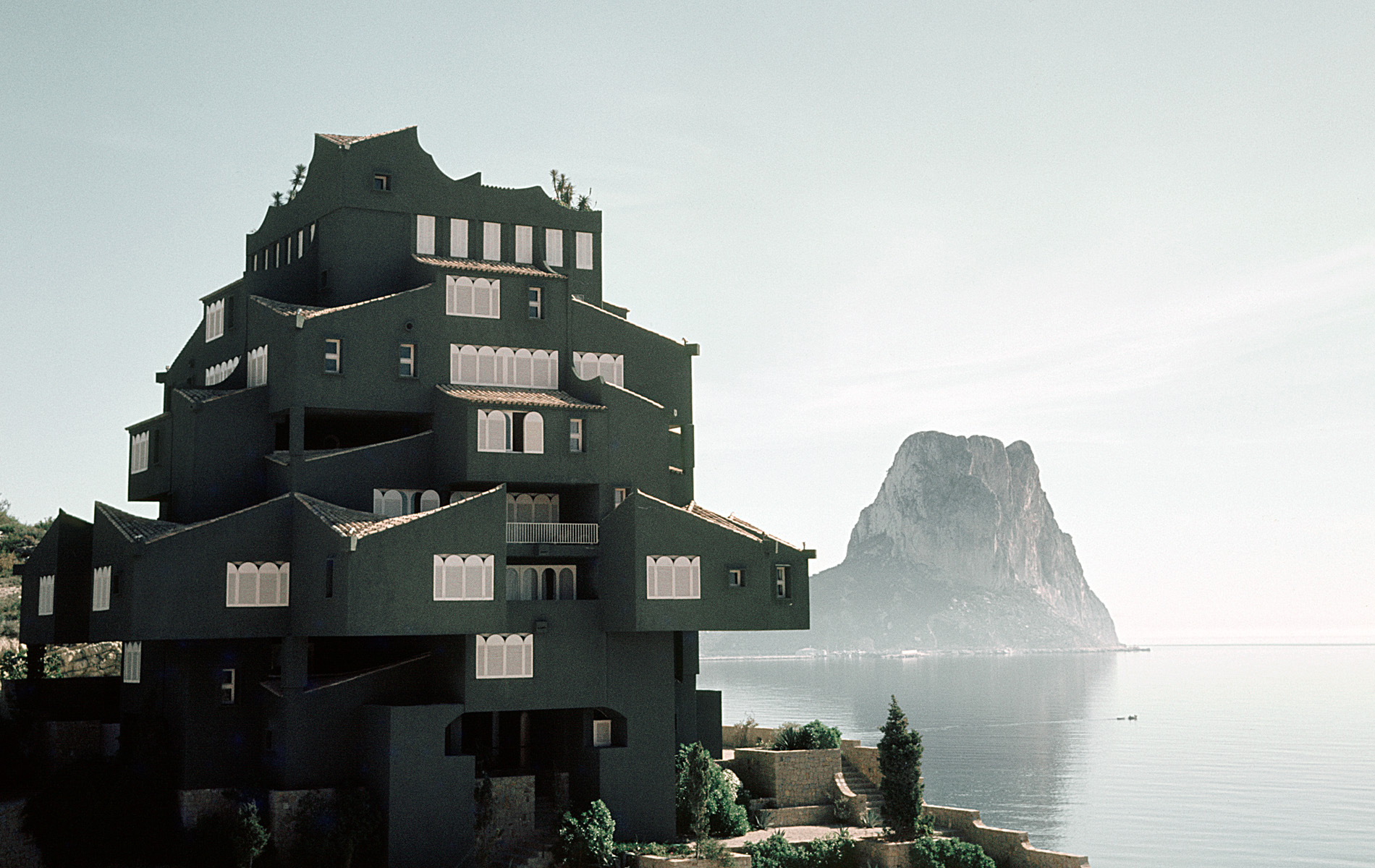

Xanadú by Ricardo Bofill Taller de Arquitectura, Calp, Spain
Known for his array of surrealist creations, the late Ricardo Bofill designed and executed a series of unique buildings equipped with swimming pools, bars, restaurants, and sports facilities facing the Rock of Ifach from 1962. The Xanadú building is one of the first developments and aimed to establish a methodology to create geometric elements in space. The conflicting geometries and orientations add to the surrealist quality of the building.

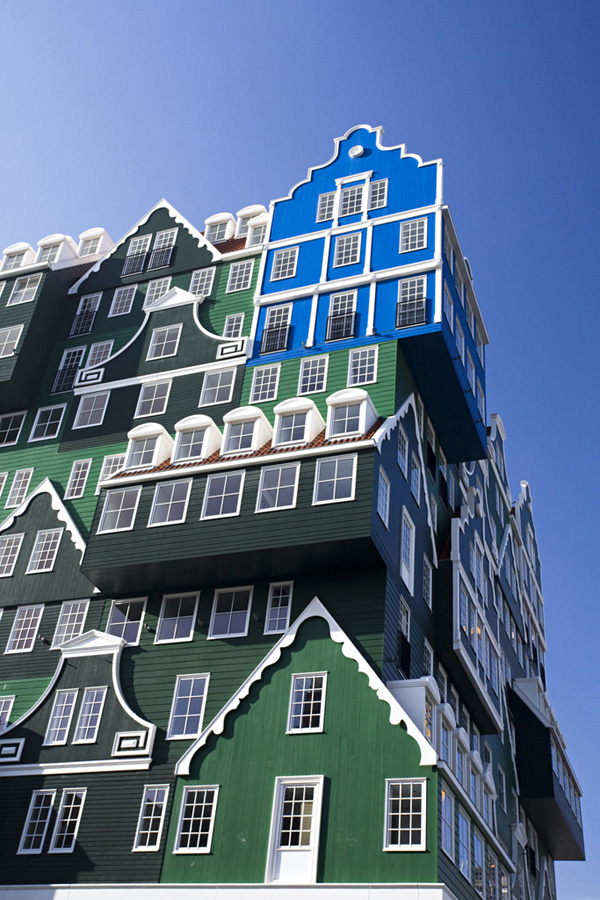
Inntel Hotel by WAM architecten, Zaandam, Amsterdam
Possibly inspired by the works of Bofill, Inntel Hotel uses a similar unusual amalgamation of various orientations to create a unique façade. It comprises Zaandam’s five distinct housing designs, from laborer’s cottages to row homes, all of which are painted in a traditional shade of Zaandam green. The one exception is the blue corner piece, which stems from Claude Monet’s 1871 impressionist painting “The Blue House at Zaandam” that he painted while visiting Amsterdam.
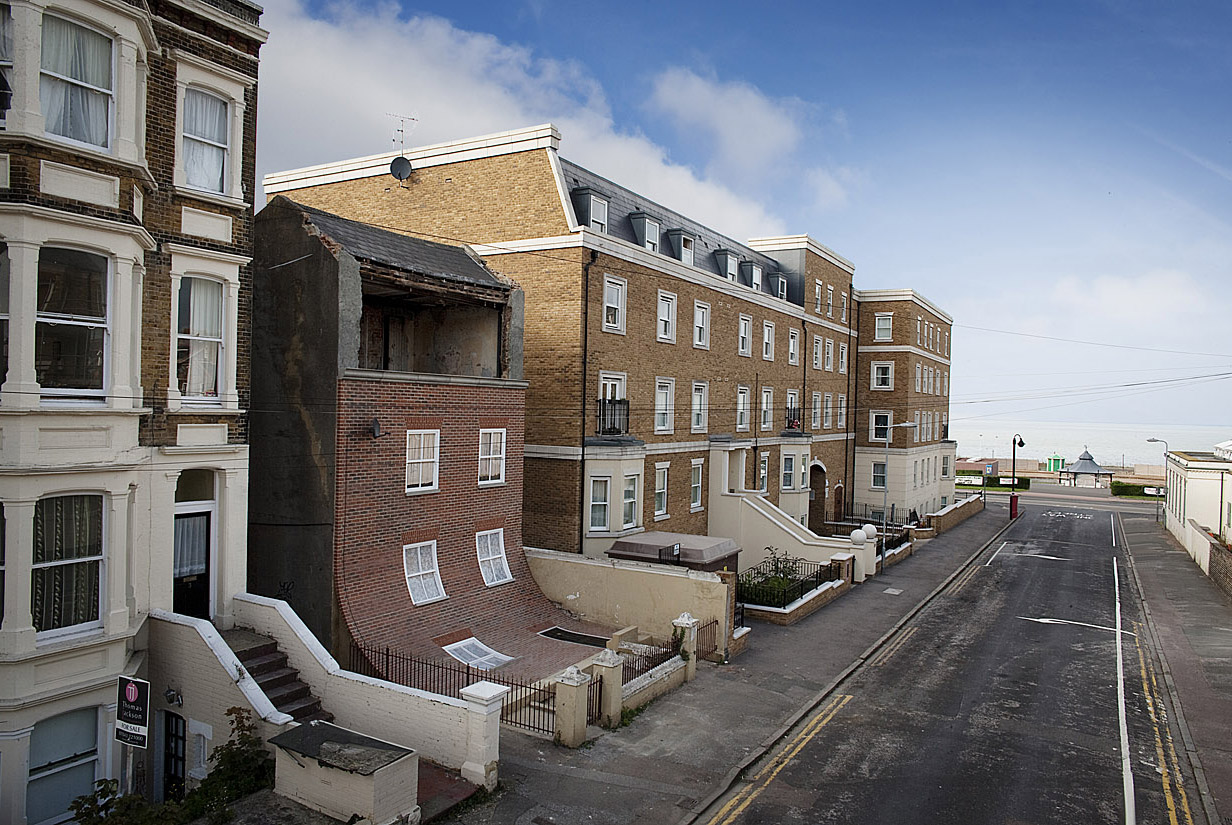
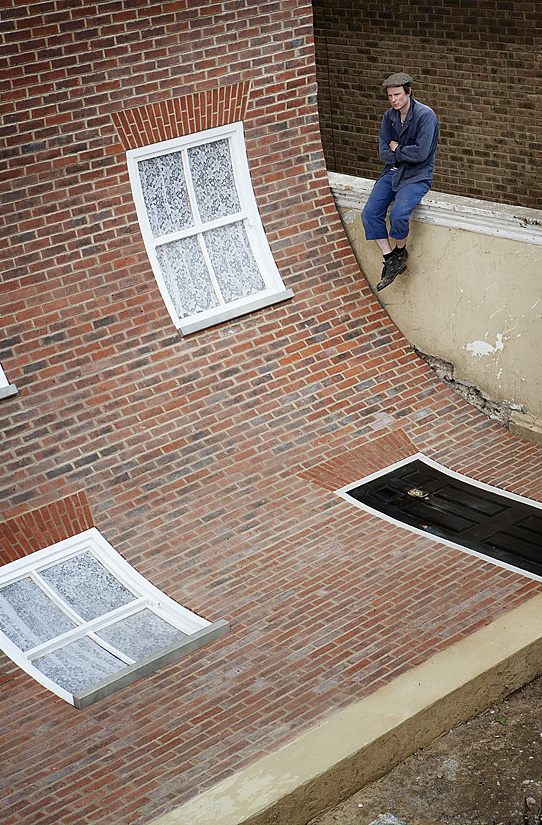
From the Knees of my Nose to the Belly of my Toes by Alex Chinneck, London, United Kingdom
Blurring the line between architecture and art, British artist and designer Alex Chinneck peeled the front of a four-story house in Margate away from the rest of the building. The curving bricks, windows and doors that slide into the front garden are quintessentially surrealist, with this kind of illusional architecture undoubtedly pushing the boundaries of reality. One can’t help but think of what is perhaps the hallmark of Surrealist painting — Salvador Dalí’s The Persistence of Memory.

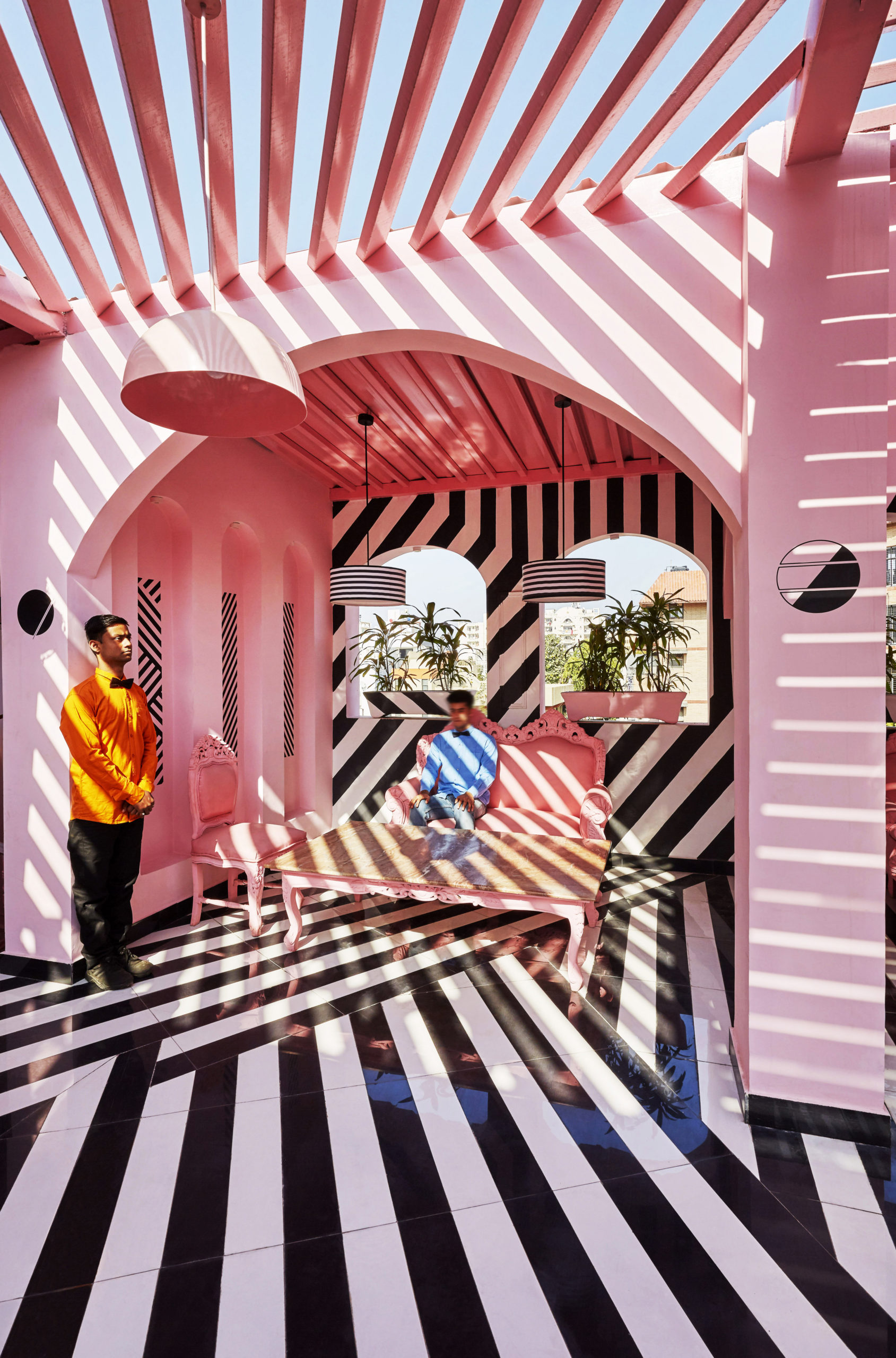
The Pink Zebra by RENESAS ARCHITECTURE DESIGN INTERIORS STUDIO, Kanpur, India
Inspired by the work of Wes Anderson, The Pink Zebra is a truly surrealist space. By using a limited and modern pallet in conjunction with traditional Indian colonial features and furniture, the bar and restaurant juxtaposes itself to become striking, unsettling but ultimately difficult to ignore.
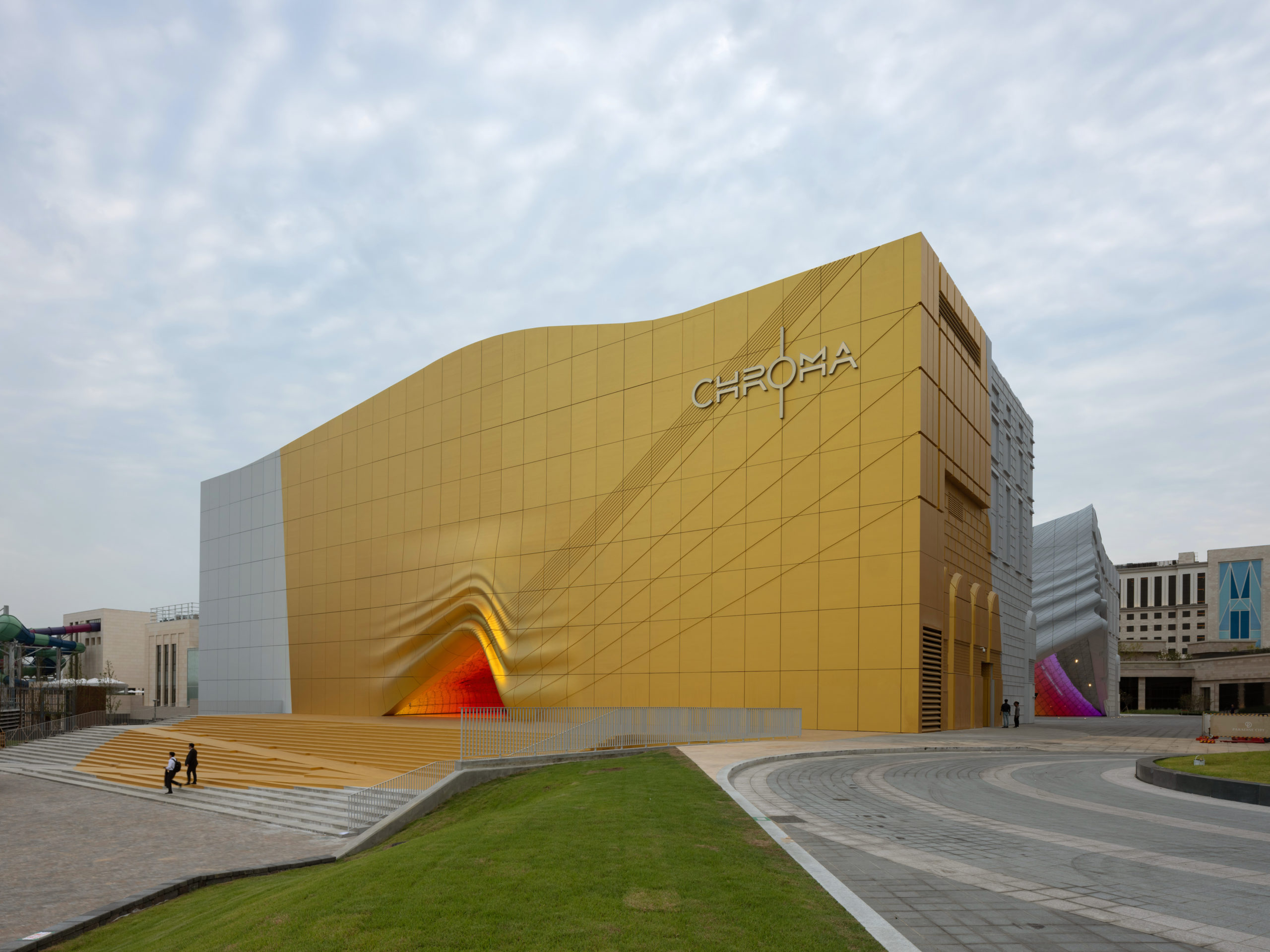

The Imprint by MVRDV, Seoul, South Korea
The Imprint is an art-entertainment complex made up of two distinctly unique buildings. Rotterdam-based MVRDV’s ingenious solution was to design two simple volumes onto which they projected the façades of the neighboring buildings, “imprinting” them in the form of relief patterns. The cartoonish, surrealist façades are made of 3,869 unique glass-fiber reinforced concrete panels. Once installed, the panels were painted white to emphasize the reliefs, thereby transforming the two buildings into sculptural volumes of abstract art.
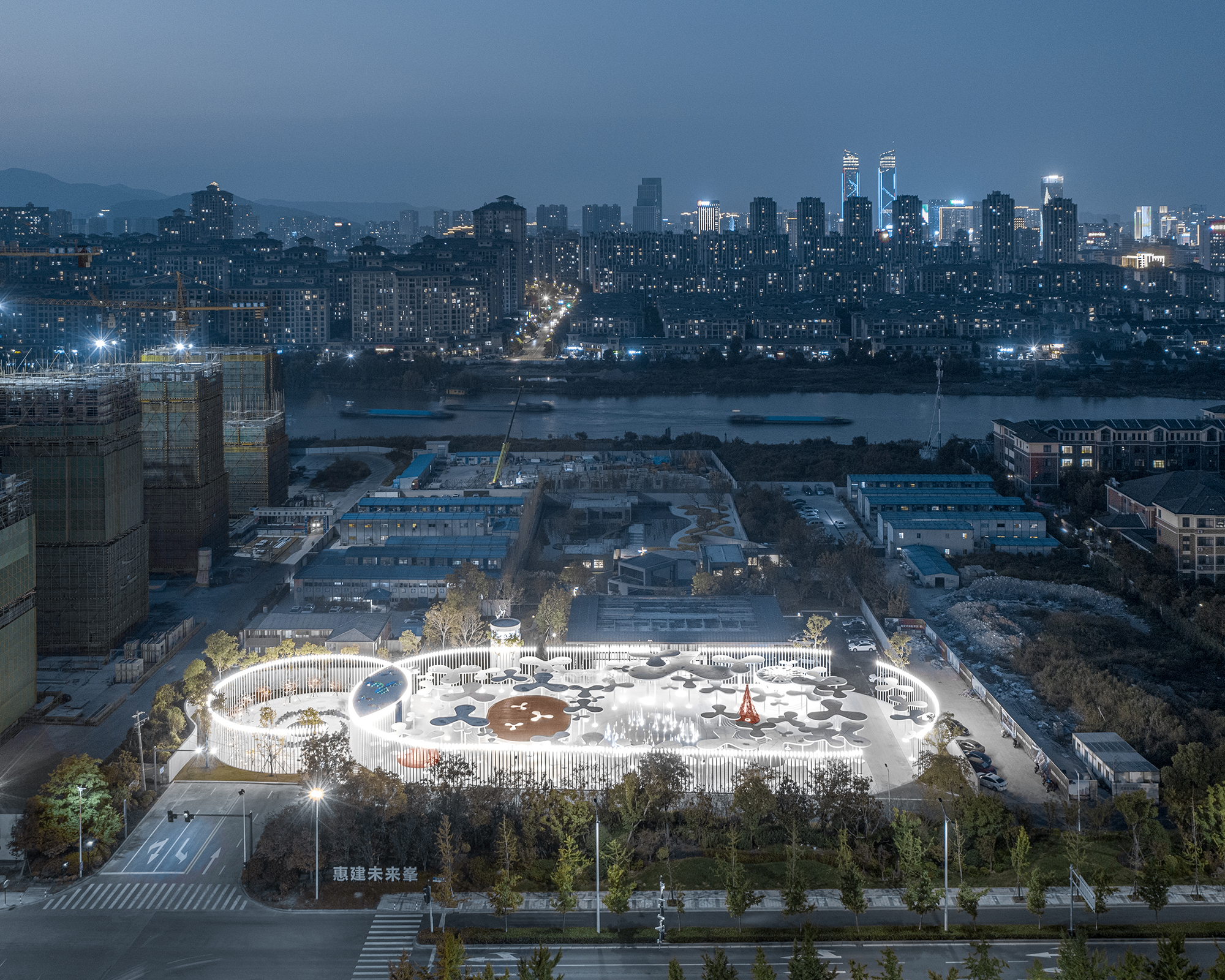
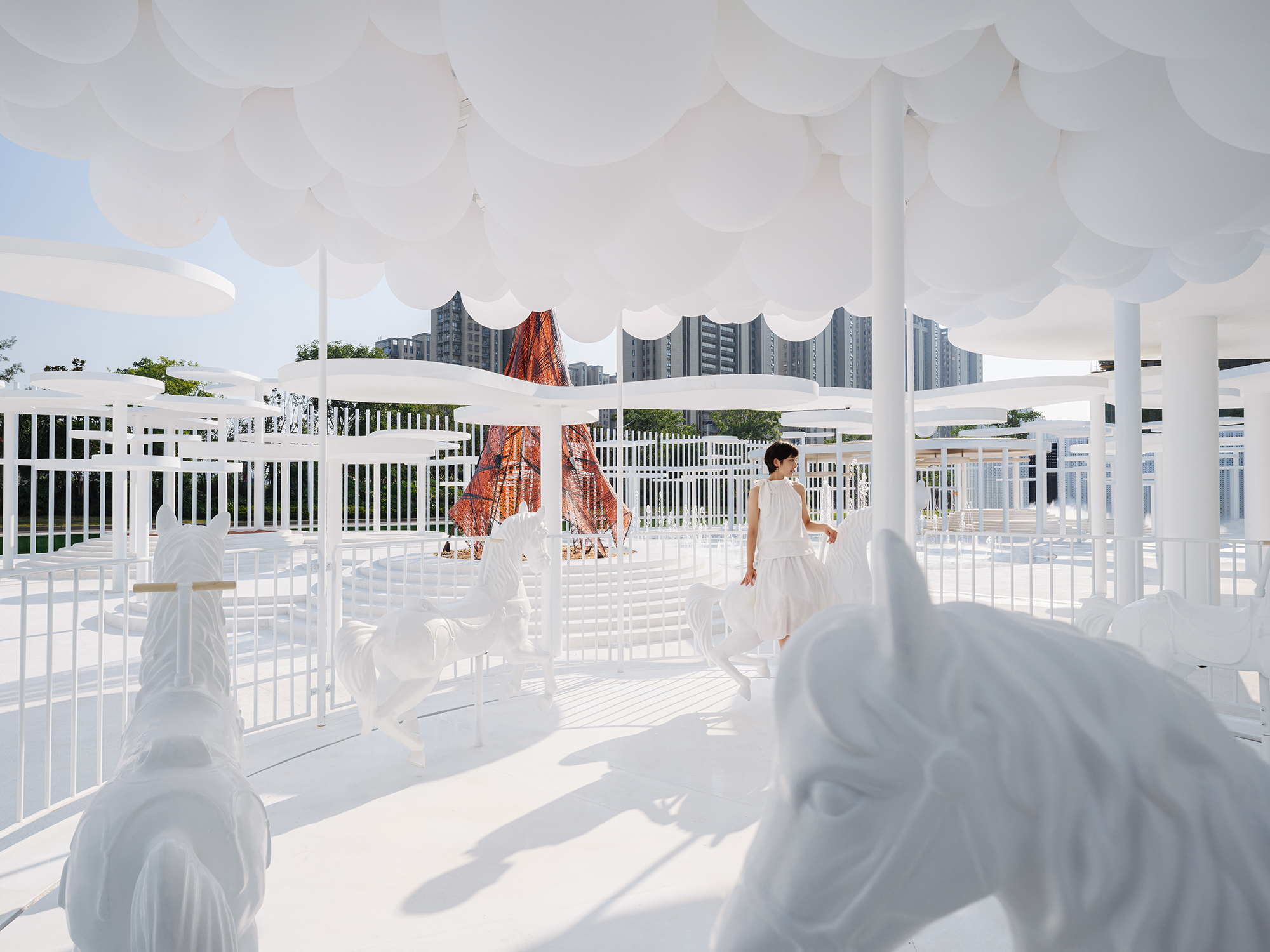
Dream Within Dream by Wutopia Lab, Zhejiang, China
A Dream Within Dream is inspired Wutopia Lab founder Yu Ting’s daughter. Based on her recurring dream set in the woods, Yu-Ting used 108 white steel columns in three sizes to form this abstract forest. From there, he created various landscapes, such as caves, hills, streams, rocks, highlands, waterfalls and theatres within the woods in order to develop a journey of exploration and discovery.
We are thrilled to announce the winners of Architizer's inaugural Vision Awards, the world’s biggest awards program dedicated to the art of architectural representation. Sign up to receive future program updates >






 Dream within dream
Dream within dream  From the Knees of my Nose to the Belly of my Toes
From the Knees of my Nose to the Belly of my Toes  Inntel Hotel Amsterdam – Zaandam
Inntel Hotel Amsterdam – Zaandam  MIAMI MUSEUM GARAGE
MIAMI MUSEUM GARAGE  Ricardo Bofill Taller de Arquitectura Headquarters
Ricardo Bofill Taller de Arquitectura Headquarters  The Imprint
The Imprint  Tree Hotel
Tree Hotel  Xanadú
Xanadú 


